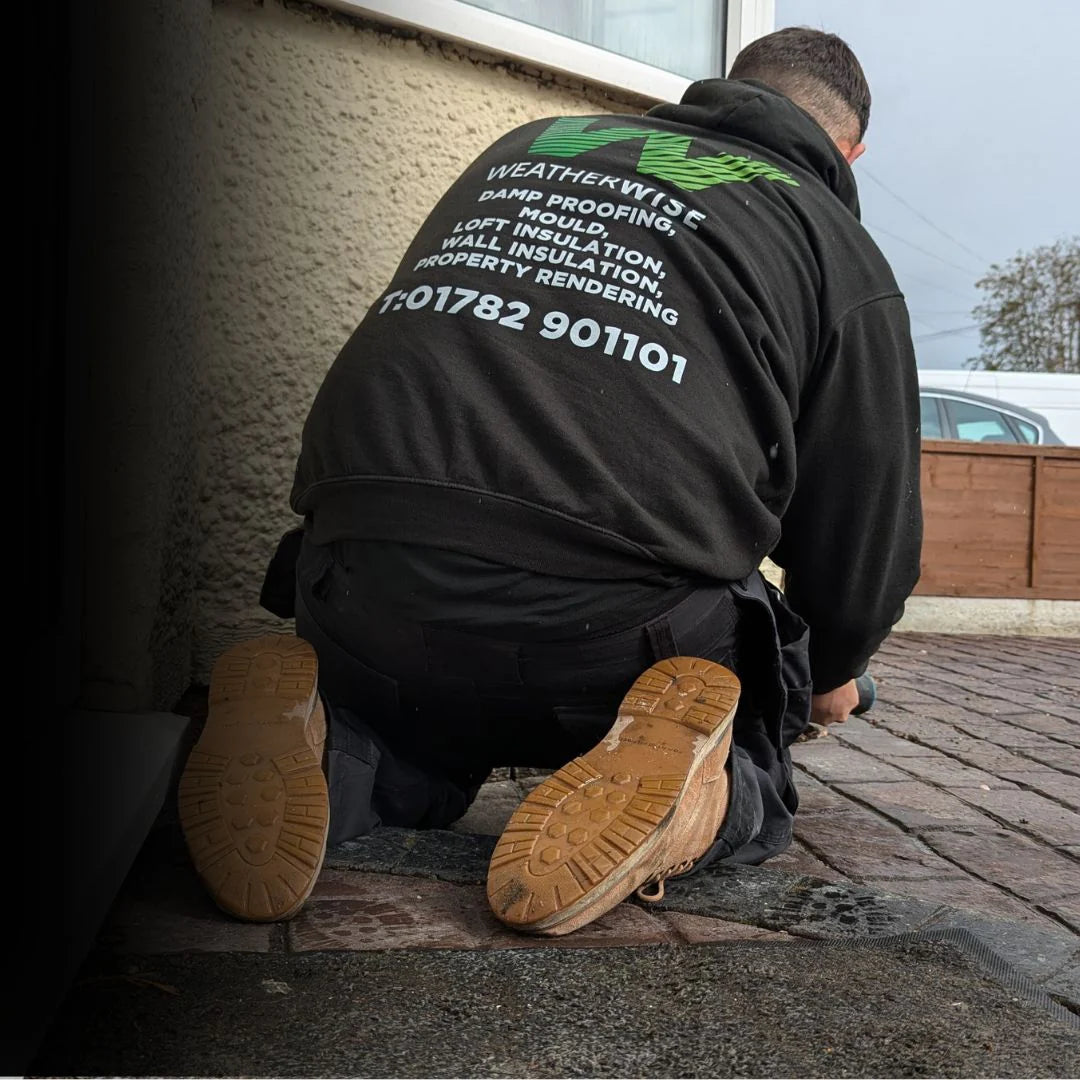🧂 Not All Damp Walls Are Rising Damp – Know the Difference
You’ve found damp patches, bubbling paint or crumbling plaster — but is it really rising damp, or could it be salt contamination?
In Altrincham's older brick and solid wall homes, these two issues often look the same but require very different treatments.
At Weather Wise, we’re regularly called out to inspect suspected rising damp that’s actually caused by hygroscopic salts — and spotting the difference can save homeowners time and money.
🔍 What Are Hygroscopic Salts?
Hygroscopic salts are left behind when water evaporates through the brickwork. These salts have the ability to absorb moisture from the air, meaning your wall can feel damp — even when it isn’t.
They’re most commonly found:
-
In old chimney breasts and flues
-
On walls that previously suffered rising or penetrating damp
-
In homes with historic moisture issues where plaster wasn’t renewed properly
They cause:
-
Damp-like staining
-
Flaking or bubbling paint
-
Damp patches that change with humidity
-
No obvious moisture source
🧪 How to Tell the Difference
Here’s a quick breakdown:
| Rising Damp | Salt Contamination |
|---|---|
| Moisture from ground up | Moisture absorbed from the air |
| Usually capped at 1–1.2m height | May occur higher or around chimney |
| Tends to follow a clear line | Patchy, irregular marks |
| High readings on moisture meter in wall and skirting | Dry readings despite visual signs |
| May leave tide marks or salts | May show white crystalline deposits |
Our surveyors use moisture mapping, salt testing, and thermal imaging to confirm the cause.
🛠️ When Is Salt Inhibitor Enough?
If there’s no live rising damp, and your DPC is intact, we may only need to:
✅ Remove contaminated plaster back to brick
✅ Apply a salt-inhibiting render or lime basecoat
✅ Re-plaster with breathable finish
✅ Improve ventilation to stop further moisture build-up
This is less invasive (and more affordable) than injecting a new DPC if it’s not actually needed.
🧱 When Rising Damp Is the Problem
If our tests show active capillary moisture moving up from ground level — and the original DPC has failed or been bridged — we may recommend:
-
Silicone-based DPC injection
-
Salt-inhibiting plaster system
-
Improved sub-floor ventilation
-
Cavity cleaning or plaster bridging removal
🏘️ Why Altrincham Homes Are Affected
Many homes in areas like Timperley, Broadheath, and Oldfield Brow have:
-
Solid 9-inch brick walls with no cavity
-
Coal fireplaces or chimney breasts sealed without venting
-
Old plaster still contaminated from previous moisture issues
-
Poor ventilation or insulation upgrades that trap moisture
All these conditions can make salt damage appear identical to active rising damp.
👷♂️ Why Trust Weather Wise?
-
✅ CPD-qualified damp specialists
-
✅ Members of the Damp Proofing Association
-
✅ Backed by the Federation of Damp
-
✅ Trained in BS 5250 moisture management
-
✅ Transparent advice — we never upsell DPCs unless they’re genuinely needed
📞 Book a Free Damp & Salt Assessment in Altrincham
https://weatherwiseuk.co.uk/pages/contact
FAQs
Is salt contamination dangerous?
It’s not hazardous to health, but it can damage walls and make surfaces unusable without correct treatment.
Can I just paint over it?
Unfortunately not. The salts will continue to absorb moisture and push through paint or wallpaper.
How do I know if I need a new DPC?
That’s where a proper survey comes in. If the DPC is functioning and not bridged, we’ll avoid unnecessary work.



